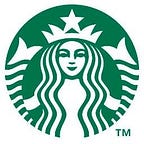Why thanking a veteran isn’t enough
A call to action for civilians (and veterans)
By Tim Bomke, Starbucks Manager, Veteran & Military Affairs
When I was a little boy, it was the uniform I admired. The rows of medals, camouflage pants tucked into combat boots and flags flapping in the wind. I was raised in a community with two active-duty Air Force bases and many of my friends’ fathers were in the military. Later, I realized that the reason I could sleep safe at night was because these people were willing to step up and protect us.
And so I grew up and answered the call. I believe that we live in a great country that’s worth serving and sacrificing for. I joined the Army and took my oath of office in March of 2002 and was deployed to Iraq in November of 2004.
I believe that we live in a great country that’s worth serving and sacrificing for.
I was wounded seven months later.
You’ve probably heard this story before, but here’s how it happened for me. Our FOB (forward operating base) was near an important supply route between Kirkuk and Tikrit and every morning military and civilian convoys moved humanitarian aid, heavy equipment and supplies along it. Every night, there were clearance missions to look for enemy activity along this vital road. My platoon had already been patrolling around the clock for the previous 48 hours but there was a lot of enemy activity that night and we were called up to clear the route.
The first IED hit my humvee, ejected my gunner 100 feet away and blew the front off the vehicle. In the ensuing fog of war, insurgents triggered a secondary device that caught the last vehicle in my formation. The Sergeant driving that vehicle lost both of his legs. We took a pretty big punch that night, but we all made it home.
I was lucky; my leg was amputated below the knee. Plenty of our soldiers endured and are enduring worse. I am just one of many. Fewer than one percent of Americans have served in the military since Sept 11, so most of the country has no idea what it means to have served, or how to engage veterans returning from war. Think about your friends and family, how many veterans do you know personally? Unlike WWII, veterans today do not come home to parades or even to communities that understand what they’ve been through.
This is why I believe “Thank a Vet” is not enough. It doesn’t address the divide between civilians and veterans.
Unlike WWII, veterans today do not come home to parades.
After I was medically retired from the US Army, I became passionate in supporting troops transitioning off active duty. I know firsthand the struggles and hardship that are part of leaving the military family. It’s like returning to a foreign country; you know the language but no one seems to understand you when you speak.
Now I work on the Veteran & Military Affairs team at Starbucks. It’s my duty to help this global brand to make a real difference in the lives of veterans and their families. In my work every day, I see and hear this gap between civilians and veterans. People don’t know how to help, even when they want to. So we developed a simple set of six strategies that anyone can use to engage with veterans—and their communities.
If we as a society want to support veterans, “Thanks for your service,” is great, but that’s like saying “Hello.” Try and take the conversation to the next level.
Ask them what they did in the military, or where they served. And then try “Where are you going to go next?” or “What do you want to do now?”
Maybe that veteran doesn’t want to be a truck driver like they were in the Army, but they have extensive leadership and management skills. These connections over casual conversations can be vital. There are a lot of veterans who could use some sage advice and mentorship as they transition to civilian life.
Realize that even though your thanks is meaningful, it should be the beginning and not the end of the dialogue.
Last year I went to the State Fair in shorts. I’m not self-conscious about my injury but it was pretty obvious what had happened to me and plenty of people came up to thank me for my service. Only a few ventured to ask me about my story. And I told every one of them. That kind of engagement is what we need from both sides. I was able to give them a little piece of myself and maybe they told 10 other people, and it spread out from there.
Awareness plus action is what we’re missing.
Realize that even though your thanks is meaningful, it should be the beginning and not the end of the dialogue. I challenge you to dig deeper the next time you meet a veteran. At the airport, in a coffee shop, at the supermarket, continue the conversation. We need a movement to bring veterans and civilians together.
My hope is that although our men and women in uniform today won’t come home to a parade, they will come home to a place where they are valued and embraced. And that’s my mission now.
